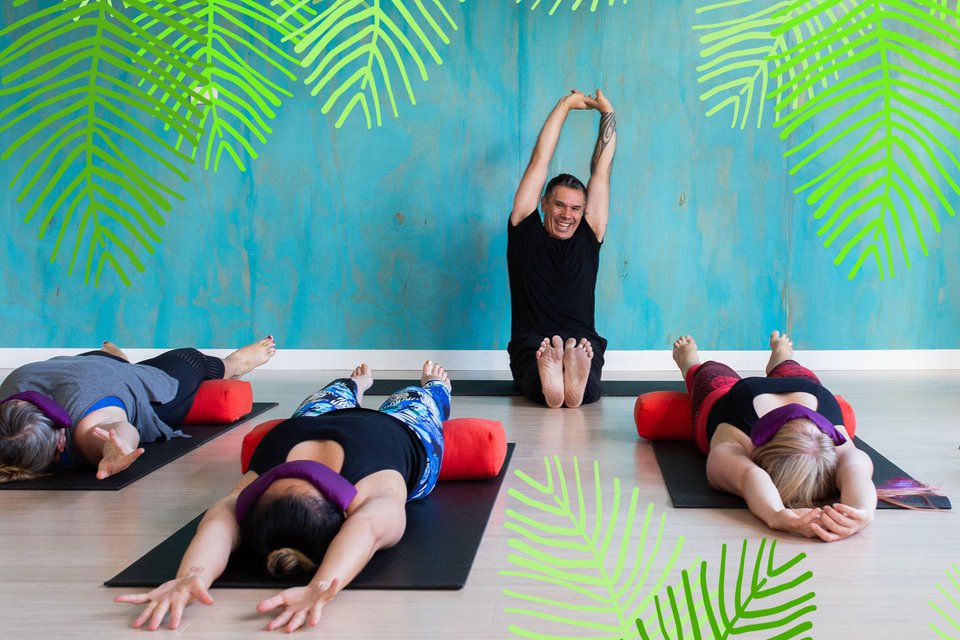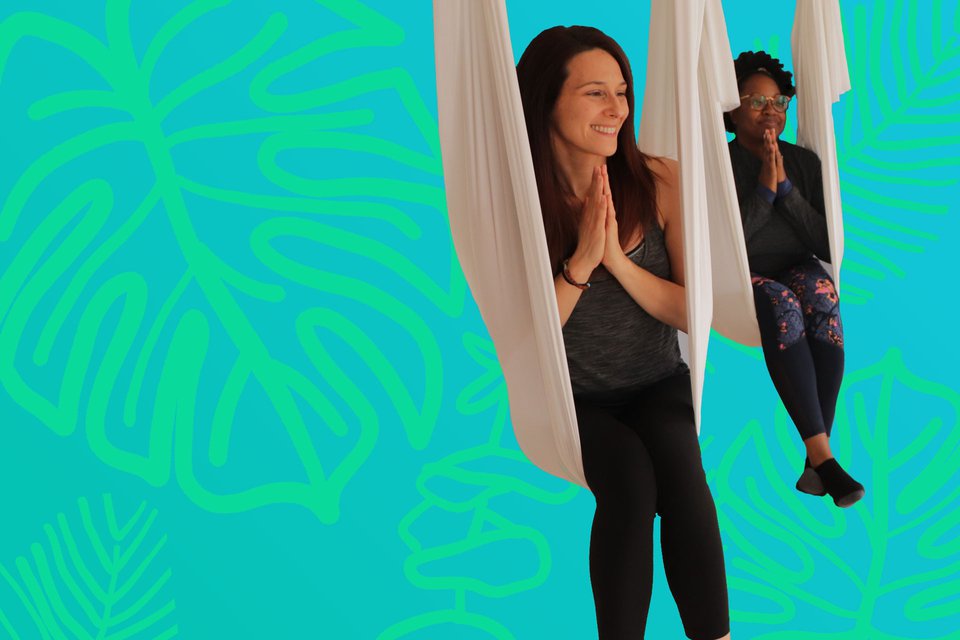Aerial Yoga, Arthritis, Autism and ADHD
Yoga can be a healing practice for us as individuals, but it can also give us the clarity and energy to help make positive change in the world. It's an honour to provide a nurturing space to unwind for people like Nick Mercer who spend their days supporting other people, and pushing for social change. Nick is also working with her own neurodiversity and health conditions and I reached out to get her perspective on how aerial yoga is helping.
She's always sending out support to others, good vibes and occasional one liners from her hot pink hammock - thanks for everything you bring to our our studio, and for sharing your story Nick!
Could you tell us a little bit about who you are and what you do?
I'm a Project Manager working on First Peoples and LGBTQI+ cultural safety at a large mental health organisation in Victoria. I’m passionate about social justice issues and how state and federal politics impact on these.
I found out in my 50s that I am neurodiverse which explains a lot!
I’ve learnt a lot about neurodiversity in general and my own sensory challenges and superpowers as a result of that.
It's an ongoing journey.
What neurodiverse conditions/identities or health challenges are you working with?
I am autistic and have ADHD. I also have ankylosing spondylitis, a form of arthritis that primarily impacts on the spine. I was diagnosed in my early 20s. I manage this with medicine, yoga, the gym, regular osteopathy and a lot of walking. The yoga and regular movement is really helpful in managing my neurodiverse traits – it helps me focus and fills up my “good sensory” bucket so that my “bad sensory” bucket doesn’t overwhelm me.
How does aerial yoga help?
I find aerial yoga particularly helpful. The movement and stretching provides similar benefits to other yoga classes, but aerial gives me the added benefits of support, inversions and swinging. The inversions feel wonderful. I can feel my spine stretching and relaxing. I like swinging because it is instantly soothing – even when I don’t realise that I have a days worth of sensory overload stressing out my brain. It’s like my brain does this huge sigh of relief.
What is your favourite aspect of this practice?
Inversions and swinging! And stretching and moving...
What is the most challenging part for you?
I get frustrated that my hands and grip strength are weak. I adjust the poses or techniques as Jo instructs so I can still do most things. Still, frustrating!
Have you noticed any changes in other aspects of life since starting aerial yoga?
My flexibility, strength and focus are much improved. There’s a circular benefit to adding yoga to your lifestyle activities – walking, exercising and leisure activities are much easier so I do more of them. Which helps my yoga practice.
Is there anything you know now, that you wished you knew before starting this practice?
The only thing I can think of is that anyone can do this. I thought that I would have to be stronger, more flexible, more graceful etc to do aerial yoga. But really, it doesn’t matter how inflexible, weak or clumsy you are, as long as you are able to follow really basic instructions, you can benefit from this practice.
I like how Jo mixes up the poses and each practice – even if I’m in beginner classes, I often learn new poses.







